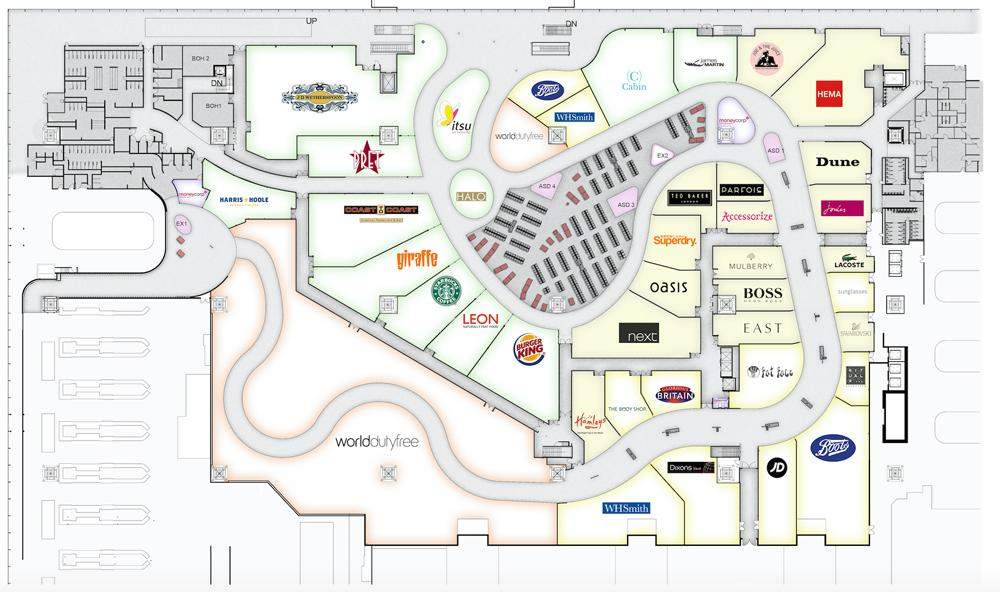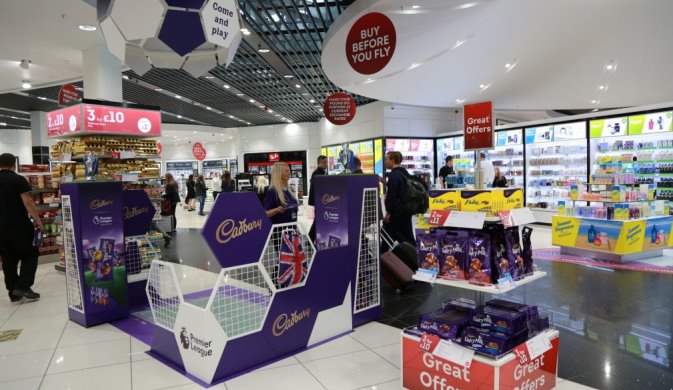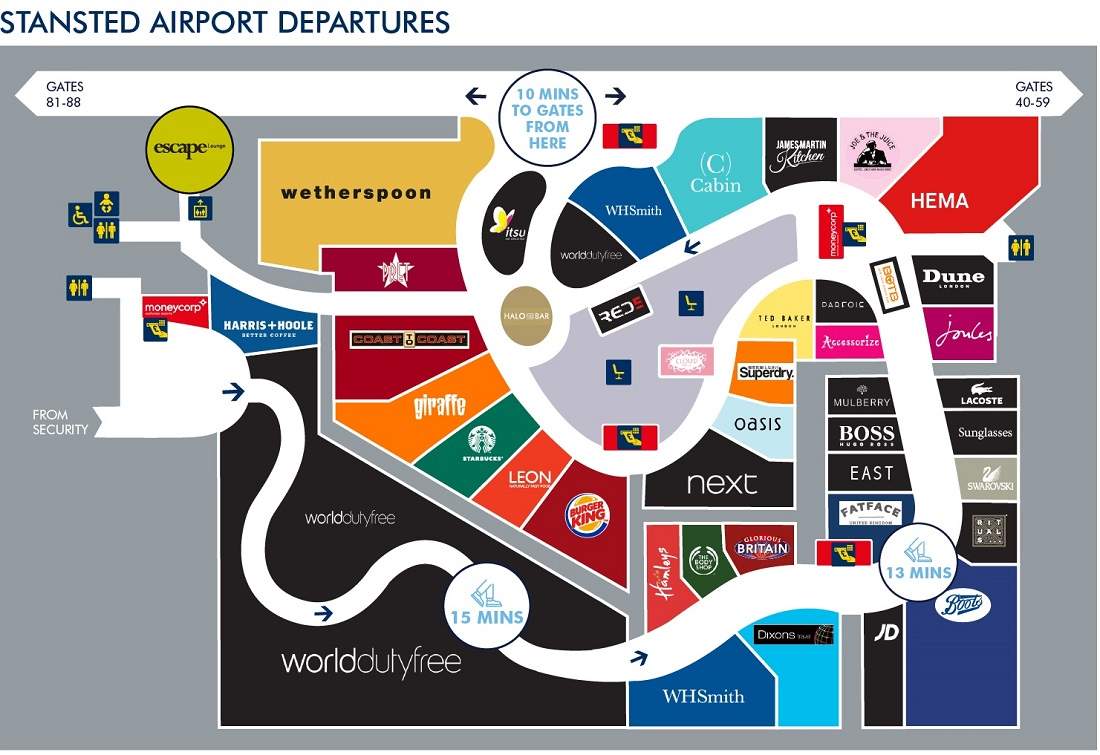Spaces of Consumerism: Airports
| ✅ Paper Type: Free Essay | ✅ Subject: Architecture |
| ✅ Wordcount: 2274 words | ✅ Published: 23 Sep 2019 |
Introduction
I will be discussing the consumer culture in reference to the different spaces of consumption of Stansted Airport and its only terminal, along with the consumer experience it provides.
In particular, I will be focussing on the consumer journey from the Duty Free shop into the main departure lounge in their terminal and the idea that passengers already leave the ground as soon as they enter the terminal.
Consumer culture focuses on the spending of the customer money on material goods to attain a lifestyle in a capitalist economy. There is considered to be individual acts of consumption as a part of large processes of consumer culture.
Furthermore, it identifies the freedom to exercise private and personal choices that as a result, is a principle at the heart of consumer culture and consumption with social class tend to go hand-in-hand.
Airport
First of all, I will discuss the architectural designs and their different functions inside airports.
Airports are often considered to be a ‘third place’, a term coined by sociologist Ray Oldenburg, who states: ‘the third place refers to a social setting distinct from both home (the first place) and work (the second place).’
Which derives from the concept that humans gravitate to settings that provide fluidity between home and workplace and creates a neutral crossword of culture and function.
The passenger security functions at airports comes down to three main things: departing, arriving and waiting; but those three actions branch into further detail: “the architectural design of the terminal building was required to serve three functions: the processing of passengers, baggage and freight, control and transfer rituals, and protection against external influences” (Airworld: 2004:37).
Once passenger safety is assured, there is then a change in focus to the the time they spend waiting, which airports pay most attention to capitalising. It is the opportunity for passengers to consume and the airports are designed to encourage you to spend your own money.
Following on from this, it is the time that passengers spend after getting through security but before boarding their flight which is considered the ‘golden hour’. The ‘golden hour’ is a term coined by airport guru, Holly Buckner, and it is the prime spending period that airports and retailers have an agreement to try maximise their revenues and profit margins.
Julian Lukaszewicz, a senior business designer at Designit and former lecturer in aviation management says: “Many airports want to prolong and expand this hour, because that translates revenues”, therefore, the simple equation which comes with this is the more time passengers spent in the ‘golden hour’, equates to the more money spent and made.
Architect, Matt Honegger, mulls on the transformation of airports into purposefully built designs that always meet customer demands and business requirements: “Over the past decades, airports have transformed from transportation hubs to a new kind of entity. Part shopping mall, part cultural centre and part Town Square, recent research indicates the airport is on the cusp of emerging as a cornerstone of 21st Century civic life.”
Airport terminals in the 21st Century cannot not simply just provide, what once were, the primary function of an airport: the efficient processing and optimum flow of passengers. They must now capitalise and satisfy the demands of consumer society in non-aeronautical revenue and offer a range of shopping, dining and drinking, which as a result, due to the variety in all three determines social diversity.
There are many examples of this at Stansted Airport: for example Hugo Boss vs Next, Lacoste vs JD Sport. It becomes a social distinction and this undoubtedly summarises consumer culture in the 21st Century.

For airport executives and airport architects, the changes taking place in airports around the world represent a natural evolution of existing trends, as well as a categorical shift that turns the airport into a cultural hub: “Airports had come to symbolise progress, freedom, trade and the aspirations of their host nations on the international stage.” (Airports A Century of Architecture, 2004:9).
The terminal at Stansted Airport offers exactly this. Although it attempts to appease cultural differences in variation of places for food and drink in the departure lounge, such as: sushi restaurant, Itsu, North American fast-dining, Burger King and Joe & The Juice and then the traditional British, J.D. Wetherspoons. But it also introduces different cultural backgrounds to traditional British heritage brands, such as: Mulberry and Ted Baker.
Duty Free
My first example of spaces of consumption in the consumer journey begins at the Duty Free shop, which is the space you identify with freedom once you have been regurgitated from the stressful ordeal, that is, security and into a space of consumption.
It is believed that passengers are likely to be in an indulgent mood after dealing with the anxiety of checking-in and security: intervistas report, titled Maximizing Airport Retail Revenue describes this as the “re-composure zone”. It adds “The view of the retail environment will cue the customer’s brain that it is time to shop.” Stansted Airport attempts to do this, by building the understanding with its consumers that once you reach duty free, your holiday can begin and the pursestrings can loosen.

The Duty Free area in an airport can be considered as a practice of display and desire: Julian Lukaszewicz, business designer at Designit and a former lecturer in aviation management says: “the classic airport design forces the passenger flow through the duty-free store, while people often have to walk through a duty-free shop again in order to reach their gates.”
The walkway is designed to create optimum flow amongst the passengers, whilst sometimes losing themselves into the immaculate displays of high end retail on one side, such as perfume, cologne and makeup, and then on the other side can be toys and chocolate.

However, through lenient rules on free perfume testing and alcohol tasting, it allows all consumers to practice social distinction and gives them all a level of satisfaction in their desires as an attempt to narrow the division in social class.
The function of the walkway in the terminals Duty Free shop is mastered: “The terminal creates a stoical environment that transforms individuals into an orderly passenger flow” (The Architecture of British Transportation in the Twentieth Century 2004:54).
Although curving it alternating direction, forcing you to indulge in the space of consumption, it is always layered with different colour tiling. This is so that consumers can psychologically distinguish the floor space from consuming and dwell time to orderly passenger flow.
The airport communicates when you are considered a consumer to when you are not through design as to when you part with the black walkway floor, you instantly become a potential customer.
Main Departure Lounge
My second example of spaces of consumption at Stansted Airport is the main departure lounge once you make it through the Duty Free shop. Though, similarly to Duty Free the consumption is a practice of display and desire to begin with for some audiences: “Passengers are now seen as a captive market for retailing” (A Century of Architecture 2004:10).
The architectural designs purposely encourage this; especially because the walkway begins by curving round to the left or more than one occasion.
The thought-process behind this design is because majority of passengers are considered to be right handed and pull their suitcases with their strongest hand, forcing them to walk anticlockwise, which as a result, will mean they will look to the the right more than the left says Intervistas report.
Therefore, as you can see there are far more shops congregated on the right than the left and arguably more affordable shops, which will most likely get a higher footfall with disposable income.

Whereas, shops like Mulberry is an example of display and desire, as majority of passengers won’t be as willing to spend in there but instead just enjoy the looking and feelings part of consuming.
As for comfortability, the seating area is located in the centre of surrounding shops and takes ; so even when you are relaxing, you are still forced to consume. However, a sign of social distinction at Stansted Airport terminal would be the location of the luxury lounge. In the top left corner is the Escape Lounge, where you literally escape consumption but it comes with an initial price or privilege. The Escape Lounge offers complimentary food and drink and free WIFI.
Presumably, the passengers who gain access to the Escape Lounge will have a larger disposable income, therefore, but removing their expenses of food and drink but increasing their comfort it should increase spending: Page 54: “Airports are volatile environments where the comfort and a reassuring design are essential to mitigate stress.” (The Architecture of British Transportation in the Twentieth Century 2004:54).
Modern Evolution
Airport technology is always evolving, becoming more and more efficient, for example, self-service check-ins and smartphone boarding. If you consider yourself to be a minimalist, all you need is a phone and passport nowadays. Whilst when you are buying food and beverage for the flight at WHSmiths or Boots, self-service kiosk could speed-up your experience as well.
Each addition has inevitably led to a change in business model, repurposing of new space and facilities to encourage maximum satisfaction and spending. But this came with the change in demand of passenger flow and their mindsets: “The design of terminals has had to adjust to massively increased security screening procedures in the aftermath of terrorist attacks of 11 September 2001.” (Airports: A Century of Architecture 2004:11).
Since the terrorist attacks of September 11th, 2001, for precautionary reasons, the time spent going through security has increased, but so has the footfall. Therefore, more people are spending more time in airports.
In order to keep passengers entertainment and sane, Stansted Airport offers all 4 hours free WIFI, for those who rely on their phone for time-consuming entertainment. Furthermore, you can indulge yourself into the shopping facilities, such as: makeup, beauty, accessories and technology. But, Stansted Airport has developed a social scene, where you can enjoy drinks before your flight at Wetherspoons or Cabin, or fill your stomach at restaurant ranging from fast-food to caviar.
If you are a membership at the Escape Lounge, you will have access to live sport and world news, which is another way passengers are offered to fill their time.
But the introduction of airport technology is not solely for consumer benefit. Mr Lukaszewicz says: “It’s so passengers don’t waste their time in a security queue when they could be spending.”
Conclusion
To conclude, the space and the different uses of it inside Stansted Airport reproduce social and cultural values and preferred meaning. The meaning of the passengers actions and behaviours coincides with the space in which you are forced to act and behave. Therefore, if you are plonked into a space of consumption for a matter of an hour or two, you will have no choice but to consume in order to avoid boredom, but also to blend in.
The evolution and design of airport terminals is forever growing and by adding more retail and dining options can only be a short-term solution. But the initial design of Stansted Airport allowed it to be flexible and become the ultimate high-tech airport: “The ultimate high-tech airport is Stansted (design: Norman Foster, 1986-91) which marries the glorified hangar with the nineteenth-century railway station. Stansted, too, aspires to be a single terminal building capable, thanks to its modular structure, of being endlessly extended with new modules without any sense of alienation from the mother building.” (Airworld, 2004:60).
So how do we prepare for the vast programmatic changes already reshaping today’s airports?
First, by being frank with ourselves, and admitting that simply adding more retail or dining options is not enough, and second, by redesigning the airport itself to seize the opportunities available in this vast new frontier.
All this begins by examining what passengers are looking for beyond a place to buy a magazine, recharge their mobile phone, and wait for a plane.
Historically, airports have been regarded as non-places or a necessary pause between where one is and where one is headed. As industry professionals, it is our job to turn that non-place into a ‘third place’.
That one can go ice skating or host a birthday party in an airport doesn’t suggest we’re spending too much time in airports. Instead, it suggests we’re building our lives around the idea of global transport.
Bibliography
Vitra Design Museum, Airworld., 2004 [Accessed: December 2018]
H. Pearman, Airports: A Century of Architecture., 2004 [Accessed: December 2018]
J Holder & S Parissien, The Architecture of British Transportation in the Twentieth Century., 2004 [Accessed: December 2018]
R. Atkins & D Weinland, Airport Retailers Look To Make Every Minute Count., 2017 [Online]
https://www.ft.com/content/5628f254-778e-11e7-90c0-90a9d1bc9691
Aviation Media, Culture and Function: ‘Airports Have Transformed From Transportation Hubs Into Shopping Malls’., 2013 [Online]
http://www.airport-world.com/features/airport-design/2182-culture-and-function.html
S.Kim, The Surprising Reason Why Airport Walkways Bend To The Left., 2017 [Online]
https://www.telegraph.co.uk/travel/lists/how-airports-make-you-spend-duty-free-shopping/
Illustrations
DFNI Frontier, Cadbury drives footfall at World Duty Free Stansted with digital game., 2018 [Accessed: December 2018]
TR Business, Exclusive: Stansted rises after major retail revamp., 2016 [Accessed: December 2018]
Escape Lounges, Find US., 2018 [Accessed: December 2018]
http://www.escapelounges.com/escape-lounges/london-stansted/
Cite This Work
To export a reference to this article please select a referencing stye below:
Related Services
View allDMCA / Removal Request
If you are the original writer of this essay and no longer wish to have your work published on UKEssays.com then please click the following link to email our support team:
Request essay removal


